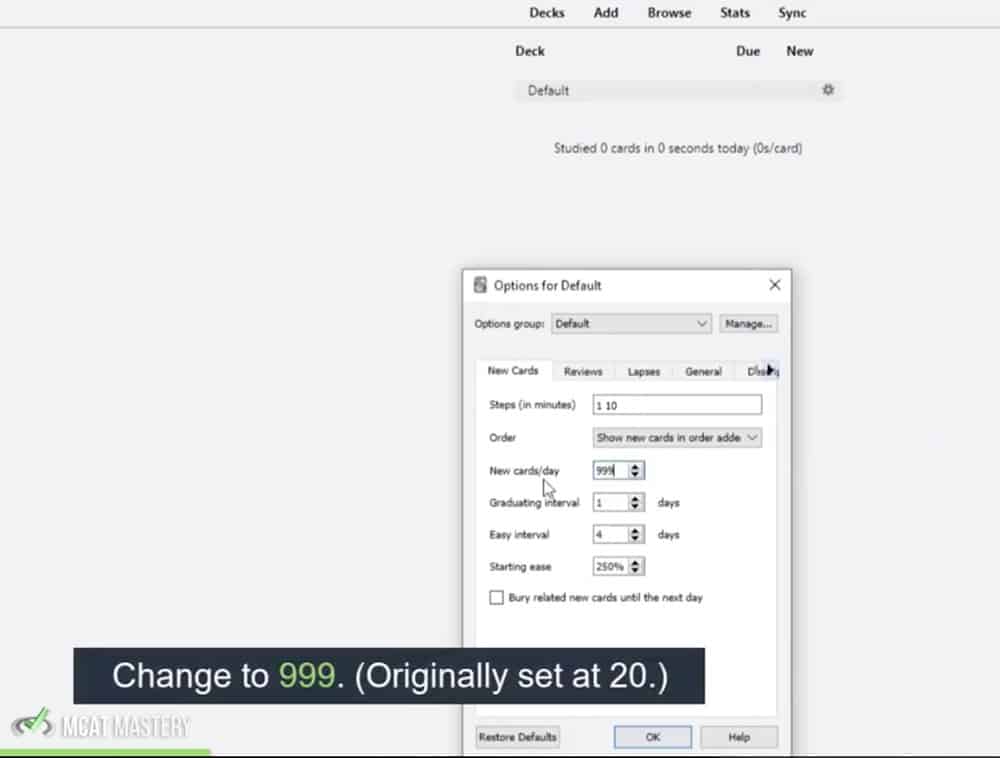

We're also able to add a picture here, which we'll do! Step 2: Find Source Material to build out questions (operon example)įront is where we type our question and back is where we type a response. Learn how Aly scored in the 100th percentile, using flashcards in this article!* *And Arvind isn’t the only one MCAT Mastery mentor who found using Anki incredibly helpful with psych/soc. So where you had to know, like the stages of development, you could literally block out the rows of the particular stage and then kind of test yourself on each one. It's really helpful for diagrams, for tables, and I found it really helpful for psych. What you're able to do is you're able to block out the individual steps of a glycolysis diagram room and then quiz yourself on those steps. It comes up here and we have, if we look here, we'll have our image inclusion right here.īasically what image occlusion is if you have some kind of diagram, say you have something like glycolysis…
#ANKI MCAT DECKS REDDIT DOWNLOAD#
Then it's gonna download it, and restart Anki. Next, the program is gonna ask you for a code. So cancel what you just opened and hit ‘Tools’ and click ‘Add-ons.’ Once we figure out everything about this, now we're gonna figure out the different types of cards that we have. If you’re looking for more guidance and strategies that can help you with bio/biochem, you should also check out Arvind’s top strategies for getting through the section and all of its challenging passages in this article here!

You'll remember the material better when your prep is mixed up like this. Your brain will have to do a switch in order to go between those two topics and having to do that makes a stronger neural network for you to remember the material.

So you might see a biology card and then you'll see a physics card next. Not just reviewing biology or physics, but reviewing the entire deck of content review at the same time because what that does is it switches up the types of cards that you're seeing. When you're actually reviewing your MCAT Anki cards, I advise that you review the entire deck. Step 4: Develop plan to review test material So, you know, if you're making new cards and you're doing bio, you can put them under biology or physics. And basically this just keeps it very organized. Now let’s hop on to the Anki on the computer and learn exactly how we can do this.Īnd now these are basically two subjects under content review. So you're able to learn new material while still holding onto the old material that you learned. What this is doing is it prevents you from having to review all your cards every single day but at the same time, making sure that you don't forget material from earlier. If we take the example from earlier with the B cells, say we have an MCAT Anki card called “what is the function of B sells?” The first time you make that card, you'll probably see it everyday and then as you get better at it, you might see it every other day, then maybe every three days, then maybe every five days, and then every week, and then it could go up to a month. It’s basically a learning technique where you learn material in increasingly spaced intervals, which ultimately increases long-term retention. The power of Anki comes from another principle called space repetition. Why can’t I just use normal flashcards or quizlet? Passive recall would be just looking in your notes and seeing it saying B cell in the definition and just looking at the information. And you have to actively recall the definition by just looking at the word B cells. On one side of the card, you'd have B cells and on the back you'd have exactly what they are. Basically, active recall is when you have to actively summon information rather than just passively looking at it.įor example, if you're studying immune cells in the body and say you're studying B cells in particular.
#ANKI MCAT DECKS REDDIT FREE#
Anki is a free and open-sourced flashcard program that helps you easily remember things via active recall.


 0 kommentar(er)
0 kommentar(er)
